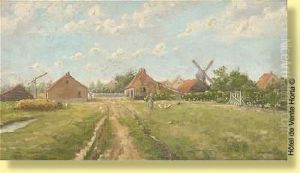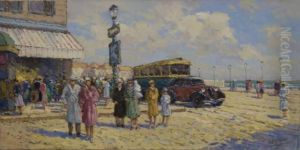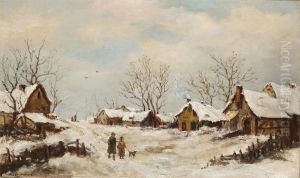Joseph I Heymans Paintings
Joseph I Heymans was a Belgian artist known for his contributions to the Realist movement in the late 19th and early 20th centuries. Born on May 17, 1847, in Brussels, Belgium, Heymans grew up in a period marked by significant social and political changes across Europe, which deeply influenced his artistic direction and thematic choices. His works often depicted scenes of rural life, the working class, and the social conditions of his time, reflecting a keen observation of everyday life and a profound empathy towards his subjects.
Heymans was educated at the Royal Academy of Fine Arts in Brussels, where he was exposed to the principles of Realism, a movement that sought to portray subjects as they were, often focusing on the harsh realities of life. This exposure would shape his artistic career, driving him to explore the lives of peasants and laborers, and the landscapes of the Belgian countryside with a truthful eye. Unlike many of his contemporaries who were drawn to the Impressionist movement that emerged later in his career, Heymans maintained a strong commitment to Realism throughout his life.
His painting style was characterized by a meticulous attention to detail, a somber color palette, and a strong use of light and shadow, which added a dramatic effect to his compositions. Heymans' ability to capture the essence of rural life and his empathetic portrayal of his subjects earned him recognition and respect among his peers. Despite this, he never sought fame and often shied away from the limelight, preferring to let his work speak for itself.
Throughout his career, Joseph I Heymans participated in numerous exhibitions and received several awards for his contributions to Belgian art. He was also a member of various artistic circles and contributed to the development of the arts in Belgium through his teaching and mentorship of younger artists. Heymans' legacy is preserved in his artworks, which continue to be celebrated for their historical significance and artistic merit. He passed away on February 25, 1921, leaving behind a body of work that continues to inspire and resonate with audiences for its humane and realistic portrayal of life.


